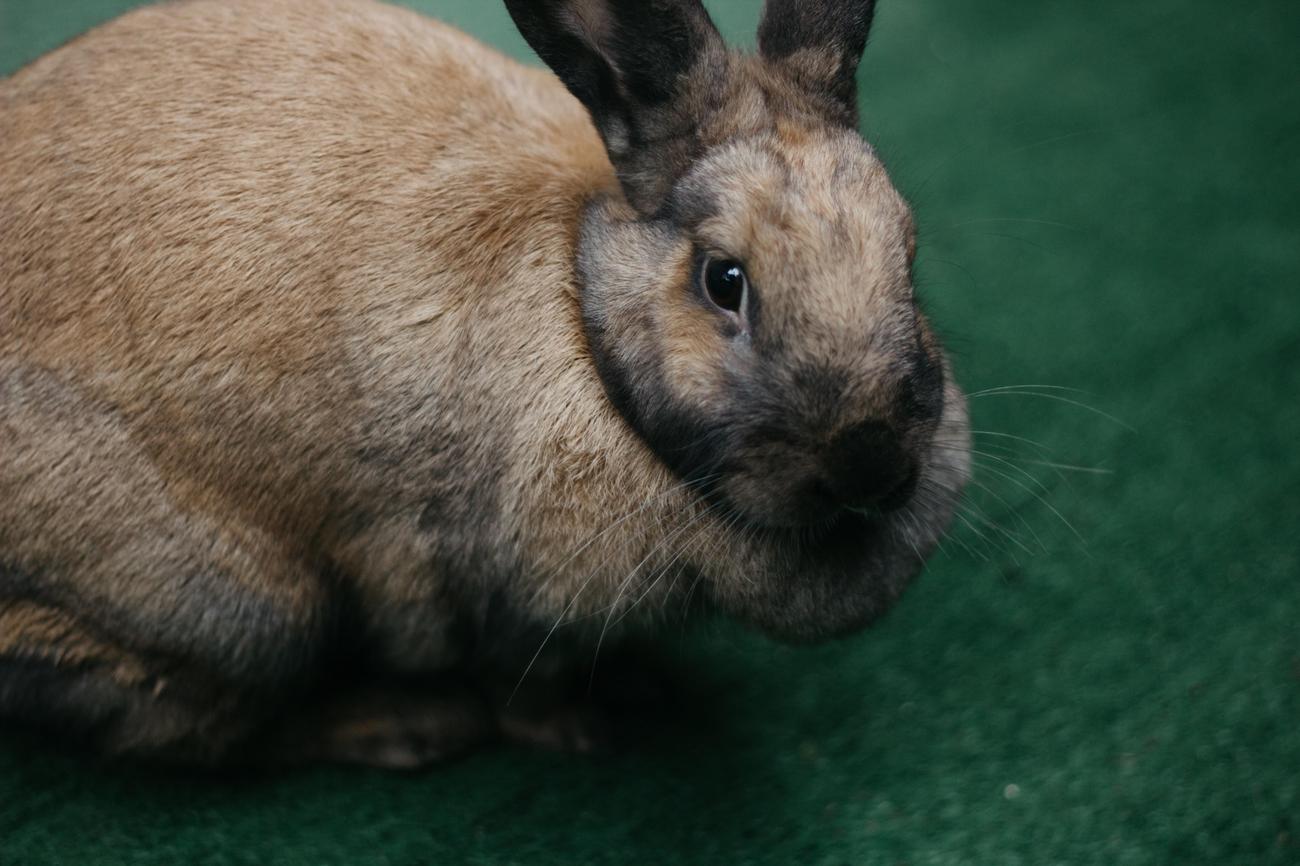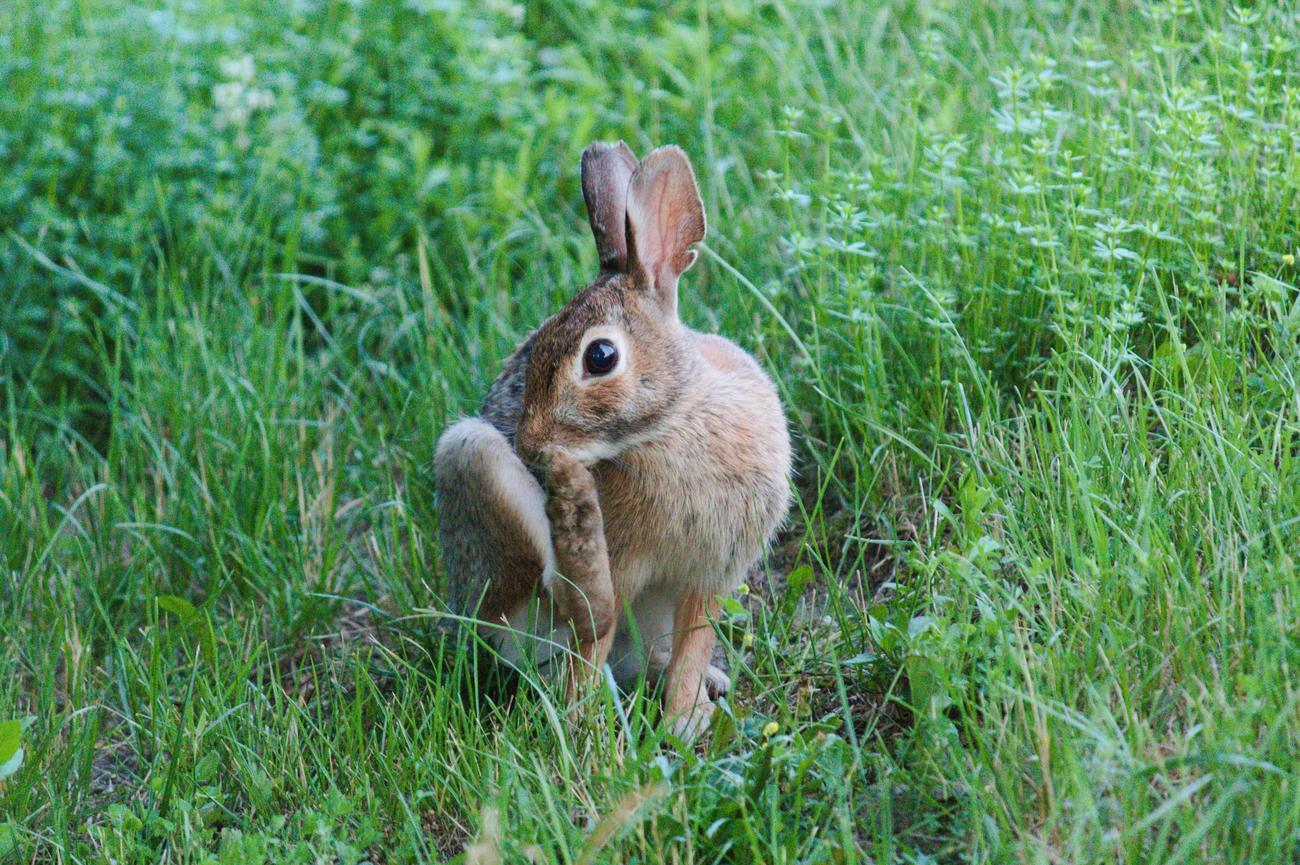Attention nature enthusiasts and wildlife lovers! Prepare to embark on a captivating journey through the enchanting world of cottontails. In this article, we will delve into the unknown and unearth three extraordinary facts about these charming creatures. From their fascinating behaviors to their remarkable adaptations, these fluffy dwellers of the natural realm are bound to intrigue and astound you. So, fasten your seatbelts as we unravel the hidden wonders of cottontails and immerse ourselves in the marvels of the animal kingdom.

3 Facts About Cottontail: Unveiling the Wonders of These Adorable Creatures
Cottontails have long captured the hearts of nature enthusiasts and animal lovers alike. With their endearing appearance and fascinating behaviors, it’s no wonder these creatures hold a special place in the hearts of many. In this article, we will explore three captivating facts about cottontails that will leave you in awe of their remarkable abilities and resilience. Brace yourself for a delightful journey into the world of these adorable, fluffy creatures!
Fact 1: The Exceptionally Resourceful Eastern Cottontail
Our first fact unravels the extraordinary adaptability of the Eastern cottontail, the most common rabbit species in North America. Found in various habitats, including fields, forests, and suburban areas, this determined herbivore demonstrates unparalleled resourcefulness. Imagine a rabbit that doesn’t just twitch its nose, but does so up to 120 times per minute, where each twitch is like a symphony of scent! With nearly 100 million scent receptors, Eastern cottontails possess an unmatched olfactory power that aids in locating food and detecting predators.
But that’s not all – these amazing creatures are also exceptional leapers! Picture a cottontail effortlessly leaping up to 15 feet and sprinting at speeds of up to 18 miles per hour, displaying their incredible agility. Just like a dancer gracefully leaping through the air, Eastern cottontails showcase their physical prowess in their daily lives. Their impeccable survival skills and keen senses make them an intriguing subject of study and admiration.
Key Point: Eastern cottontails are gifted with a heightened sense of smell and impressive leaping abilities, allowing them to navigate their environments with remarkable agility and resourcefulness.
Fact 2: The Mystique of the Ever-Changing Fur
Prepare to be captivated by our second fact, which delves into the magical transformation of the Eastern cottontail’s fur. Unlike other rabbits that change their fur color to white during winter, these charismatic creatures embrace a different approach. As the seasons shift, their fur shifts as well, showcasing a wardrobe tailor-made for distinct climatic conditions. In summer, their coat is shorter and brown, like earthy tones blending gracefully together. But when winter arrives, their fur guards them against the cold with longer and grayer strands, akin to a soft, ethereal blanket of snowfall.
This adaptation not only allows Eastern cottontails to blend seamlessly into their surroundings but also provides them with valuable insulation during harsh winters. Their ever-changing fur is a testament to their ability to adapt and thrive in diverse environments, revealing the wonders of nature’s ingenuity.
Key Point: The Eastern cottontail’s fur acts as a transformative cloak, adapting to the changing seasons and granting them both camouflage and protection against the elements.
Fact 3: A Litter of Life’s Marvels
Our final fact shines a light on the reproductive marvels of Eastern cottontails. These remarkable creatures engage in a delicate dance of life, embracing the beauty of creation through their unique mating habits. When the time is right, a female cottontail becomes receptive to the advances of a male, leading to a fascinating courtship ritual. It is during this enchanting encounter that the miracle of life begins to unfold.
Once the courtship is complete, the female cottontail gives birth to a litter of adorable offspring. On average, she brings around four tiny lives into the world. These delicate bundles of joy, so full of potential, represent the resilience and continuity of the cottontail species. With each new generation, the Eastern cottontail reaffirms its place in the intricate tapestry of life.
Key Point: Through their intricate reproductive process and the birth of their precious offspring, Eastern cottontails symbolize the beauty and resilience of life’s endless miracles.
In conclusion, these three extraordinary facts about cottontails leave us with a newfound appreciation for these adorable creatures and the remarkable qualities they possess. From their resourcefulness and agility to their ever-changing fur and the beauty of their reproductive cycle, Eastern cottontails provide us with a glimpse into the wonders of the natural world. As we celebrate their uniqueness and marvel at their ability to adapt and thrive, let us cherish and protect these charismatic ambassadors of nature’s awe-inspiring diversity.
So, the next time you encounter a cottontail hopping through a field or catch a glimpse of its fluffy tail disappearing into the distance, take a moment to ponder the hidden depths of its existence and the intricate ecosystems it calls home.
“In the world of cottontails, every subtle twitch of a nose and every leap through the air tell a story of survival, resilience, and the enduring beauty of nature’s design.”
Cotton is a versatile fabric with a rich history. It has been used for centuries to create everything from clothing to bedding. But did you know that there are three fascinating facts about cotton that you probably didn’t know? Find out more about the incredible properties of cotton by clicking here: 3 facts about cotton. Discover why cotton is not only comfortable but also sustainable in the fashion industry. Uncover the secrets behind its softness and breathability. Don’t miss out on this opportunity to expand your knowledge about the wonders of cotton. Click now to delve into the world of cotton and its captivating abilities!
3 Facts About Cottontail
Cottontail rabbits are undeniably fascinating creatures that have captured the curiosity of many. But did you know there are some intriguing details about cotton processing that are worth exploring? Let’s dive into the world of cotton cultivation and unravel the mysteries behind it.
Firstly, let’s talk about the significance of cotton in our everyday lives. This versatile material has made its way into countless products we use and wear. From cozy t-shirts to soft bedsheets, cotton is an essential part of our daily routines. Discovering the intricate journey cotton takes from cultivation to production will truly enlighten you.
Now, let’s move on to the fascinating facts about cotton cultivation. Did you know that cotton has been cultivated for thousands of years? Its history stretches back to ancient civilizations, where it played a crucial role in their economies. Exploring the rich heritage of cotton and its impact on different cultures is an intriguing adventure on its own.
But wait, there’s more! Delving deeper into cotton cultivation, we come across intriguing details about its processing. From the moment the cotton is harvested to the intricate spinning and weaving processes, there are countless steps involved in transforming cotton fiber into the fabric we all know and love. Understanding the intricate techniques and craftsmanship behind cotton processing will leave you in awe.
So, why wait any longer? Indulge in your curiosity and click here to uncover fascinating facts about cotton cultivation. Prepare to be amazed by its rich history, significance in our lives, and the intricate details behind its processing. Don’t miss out on this captivating journey that will deepen your appreciation for this remarkable plant!
Interesting Facts About Eastern Cottontail Rabbits
[youtube v=”6qqAv3YIqTI”]
Eastern cottontail rabbits, a member of the Leporidae family, are one of the most common rabbit species in North America. Their resourcefulness and adaptability make them a fascinating creature to study.
Species Distribution
The eastern cottontail can be found in various habitats across North America, including meadows and shrubby areas in the eastern and south central United States, southern Canada, eastern Mexico, Central America, and parts of South America. Originally not found in New England, it has now been introduced there and competes for habitat with the native New England Cottontail.
Territorial Expansion
In the mid-1960s, the eastern cottontail was introduced to several new regions, including Cuba, Jamaica, Cayman Islands, Puerto Rico, Dominican Republic, Barbados, Bahamas, Haiti, Grenada, Guadeloupe, Saint Croix, and even northern Italy. It displayed rapid territorial expansion in these areas, establishing itself successfully.
Home Range and Habitat
Eastern cottontails typically inhabit circular and uniform home ranges. These ranges can vary in size but average around 1.4 acres for adult males and 1.2 acres for adult females. However, sizes can range from 0.5 to 40 acres. The rabbits’ home range may shift in response to changes in vegetation.
Physical Abilities
Eastern cottontails possess remarkable physical abilities. With their 100 million scent receptors, they can efficiently locate food and detect predators. Their noses twitch up to 120 times per minute, enhancing their olfactory capabilities. Additionally, these rabbits are exceptional leapers, capable of jumping up to 15 feet, and they can sprint at impressive speeds of up to 18 miles per hour.
Seasonal Adaptations
The fur of eastern cottontails changes with the seasons, providing both camouflage and insulation. In the summer, their coats are shorter and brown, blending with the surrounding environment. As winter arrives, their fur becomes longer and grayer, helping them to stay warm in colder temperatures.
Reproduction and Symbolism
Eastern cottontails participate in a courtship ritual and give birth to an average of four offspring. These rabbits symbolize the resilience and beauty of life through their reproductive cycle and the birth of their young. They offer a profound connection to the wonders of the natural world and should be cherished and protected.
In conclusion, eastern cottontails are fascinating creatures that thrive in various habitats across North America. Their resourcefulness, physical abilities, and seasonal adaptations make them a unique and important part of the ecosystem. By understanding and appreciating these interesting facts about eastern cottontail rabbits, we can better protect and preserve their natural habitats.

FAQs
Q: What is the most common rabbit species in North America?
A: The most common rabbit species in North America is the eastern cottontail.
Q: How does the eastern cottontail rabbit look like?
A: The eastern cottontail rabbit has brown, reddish-brown, or gray backs, a white belly, long ears, big eyes, and a fluffy white tail.
Q: When is the eastern cottontail rabbit most active?
A: The eastern cottontail rabbit is mostly active at night but can also be active in the early morning, dusk, or dark days.
Q: How fast can the eastern cottontail rabbit run?
A: The eastern cottontail rabbit can run up to 18 miles per hour and leap up to 15 feet.
Q: How long do wild eastern cottontails usually live?
A: The lifespan of wild eastern cottontails is usually around 15 months, but they can live up to 9 years in captivity.
- China II Review: Delicious Food & Speedy Service - April 17, 2025
- Understand Virginia’s Flag: History & Debate - April 17, 2025
- Explore Long Island’s Map: Unique Regions & Insights - April 17, 2025
















